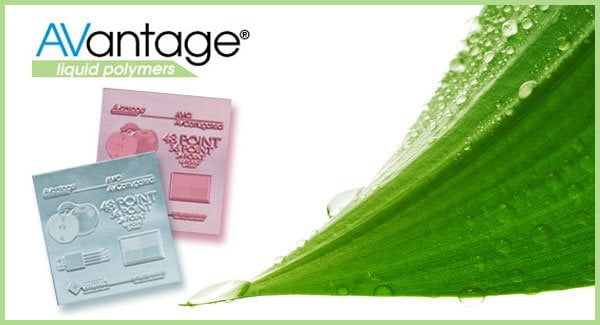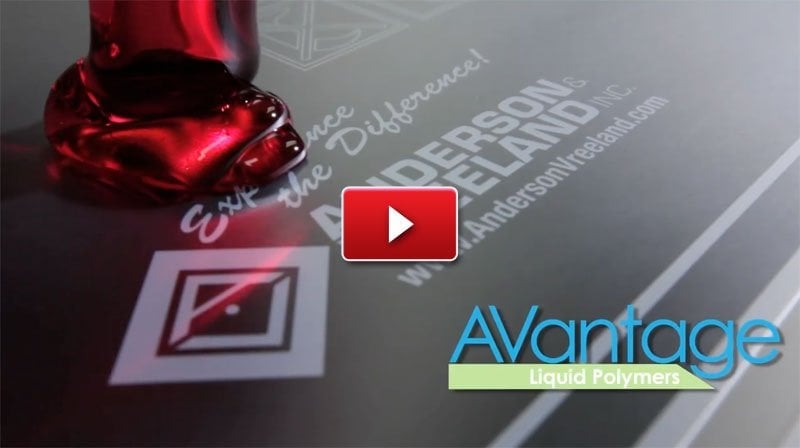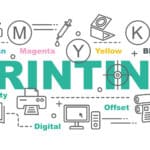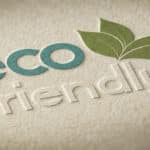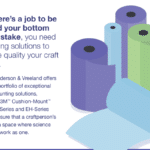How Green is AVantage Liquid Photopolymer?
AVantage Liquid Photopolymer is green and efficient—and its popularity is growing.
Liquid Photopolymer has come a long way since the days it was considered second fiddle to sheet photopolymer—and now it’s a environmentally sustainable platemaking product in high demand. But there are a few hurdles, explains Randy Reynolds, AVantage Business Development manager, to its wider adoption.
The History
Liquid photopolymer really started coming into its own in the late 70s, as the flexo industry realized that green was the way to go. But not all was smooth sailing, says Reynolds.
[quote]“In years gone by people weren’t really convinced liquid photopolymer could image anywhere near as well as it does now,” he says. But now the technology of the inks and resins has improved to the point that high-quality detail work can be done with liquid, thereby avoiding the caustic chemicals required to wash the relief areas of the plate. “The inks have been reformulated and refined and are now more conducive with different materials. Typically liquid was associated with only corrugated paper type products. It’s now able to print on some PVC and some polywoven type backs so it’s growing by leaps and bounds in those areas.”[/quote]
Greening Driven by CPCs
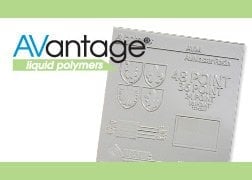 The real push to green in the flexo industry came from large Consumer Product Companies, like Wal-Mart, Georgia Pacific, and International Paper, all who were demanding environmental sustainability throughout the entire supply stream. For vendors, going green meant staying in business. “So the trade shops where these plates are being made, if they’re going to be rewarded with any new business, they have to be compliant,” says Reynolds.
The real push to green in the flexo industry came from large Consumer Product Companies, like Wal-Mart, Georgia Pacific, and International Paper, all who were demanding environmental sustainability throughout the entire supply stream. For vendors, going green meant staying in business. “So the trade shops where these plates are being made, if they’re going to be rewarded with any new business, they have to be compliant,” says Reynolds.
Equipment—The Last Frontier
The only issue standing in the way of large scale liquid photopolymer adoption is equipment—as in, the lack of. There are only a handful of companies overseas, and none in the U.S., that manufacture liquid photopolymer equipment, and a 7 to 9 month turnaround is common. The demand is so high that used equipment can go for as much as new. Liquid equipment is also more complex than sheet, and therefore more expensive. “Liquid is much more expensive than sheet photopolymer systems because you’re extruding a liquid and the rigidity and technicality of the system is much, much more advanced than anything to do with sheet.”
Which means that convertors who don’t already have a liquid photopolymer platemaking system are having a hard time entering the market. They’re sold on the product and the market share, says Reynolds, and if the equipment were more accessible, liquid photopolymer’s sales would grow exponentially.
The Biggest Market-Driver
The biggest advancement and what’s really fueling the market to convert from sheet to liquid is the process of an inposition plate. The artwork is overlaid with a black mask that blocks the UV light from curing the resin, explains Reynolds. “If you look at a typical corrugated plate, there’s far more non-image area than there is image area and all of that is 100% reclaimable. Whereas if you do it with a sheet plate, all of that gets washed away with solvent and you have to dispose of the waste. It’s just a nightmare.”
Watch the video: How To Make a Liquid Photopolymer Plate Using AVantage Liquid Photopolymer Resins.
So How Green is AVantage Liquid Photopolymer?
1. It’s soap and water washable.
Normal soap and water that can be washed down the drain—there’s no caustic chemicals at all. AVantage Liquid Photopolymer is only for use with water-based flexo inks—it will not work with any solvent-based or oil-based inks.
2. It’s reclaimable
In the non-image areas of the plate, it’s 100% reclaimable. The material can be captured and reused multiple times.
3. It uses fewer resources
AVantage Liquid Photopolymer uses far less electricity than a comparable sheet plate. A typical .250 thick sheet plate takes anywhere from 3 to 3.5 hours to dry because the solvent is being extracted out of the plate. On a liquid plate, the times are dramatically shortened by as much as two-thirds. For example, the 3.5 hours to dry a sheet plate would only take an hour to dry that same liquid plate, the time it takes for the water to dry. You can even use an air hose and just blow the plate until it’s dry and take it right to press. That also means a big reduction in power consumption—you can make the same plate in about 2 hours from start to finish.
Contact our AV technical team to discuss how AVantage Liquid Photopolymer can help you maintain environmentally sustainability and save time and money. Simply fill out the form below to start the conversation.
[contact_form email=”rjerris@andvre.com” subject=”I’d like to learn more about Liquid Photopolymer”]
[related_posts limit=”5″]

